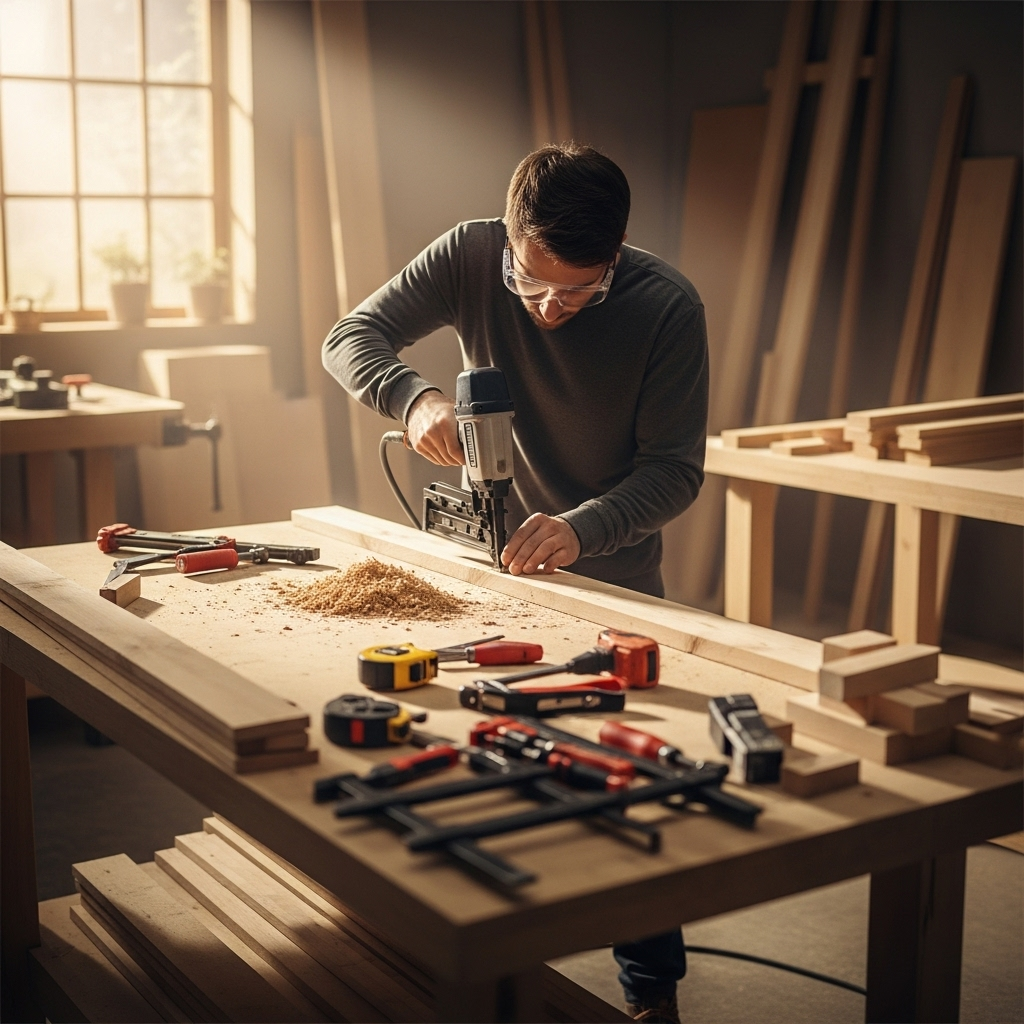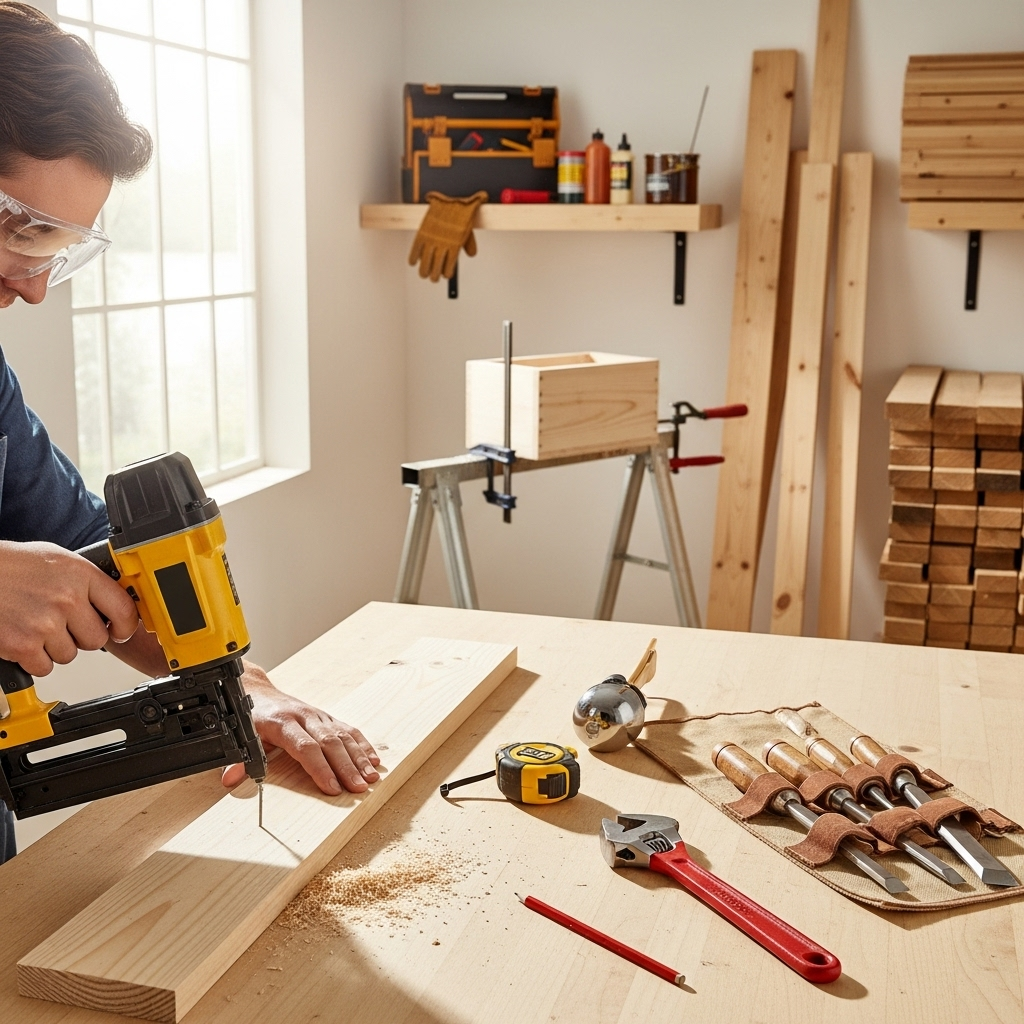Best Nail Gun For Professionals: Proven Essential
For professional carpenters and serious DIYers, the “best nail gun” is a workhorse that boosts speed, precision, and project quality. Choosing the right one depends on your tasks. This guide breaks down essential nail gun types, features, and top picks to help you find a reliable tool that saves you time and effort on any job.
Hey there, future Nailerguy! Jack Shaffer here. Ever found yourself wrestling with a hammer for what feels like forever on a project? Yeah, I’ve been there. That’s where a good nail gun comes in clutch. It’s not just about speed; it’s about getting a cleaner finish, driving nails perfectly straight, and saving your thumb from a painful encounter! Choosing the right nail gun can feel a bit overwhelming with all the options out there. But don’t you worry. We’re going to walk through this together, step-by-step, so you can grab the perfect nail gun that feels like an extension of your own arm. Get ready to make your projects a whole lot easier and a lot more professional.
Table of Contents
Why a Nail Gun is a Professional’s Best Friend
Imagine this: You’re framing a wall, and each nail takes a few swings. Now imagine driving a nail precisely where you want it with just the pull of a trigger. That’s the magic of a nail gun. For professionals, this isn’t just a convenience; it’s a necessity. It dramatically speeds up tasks like framing, sheathing, trim work, and even delicate tasks like installing crown molding.
A good nail gun also ensures consistency. Every nail is driven to the same depth, preventing blowouts or nails sticking out awkwardly. This attention to detail matters immensely on professional projects where quality and appearance are paramount. Plus, it reduces the physical strain on your body, which is a big deal when you’re on a job site all day.
Types of Nail Guns: Finding Your Perfect Match
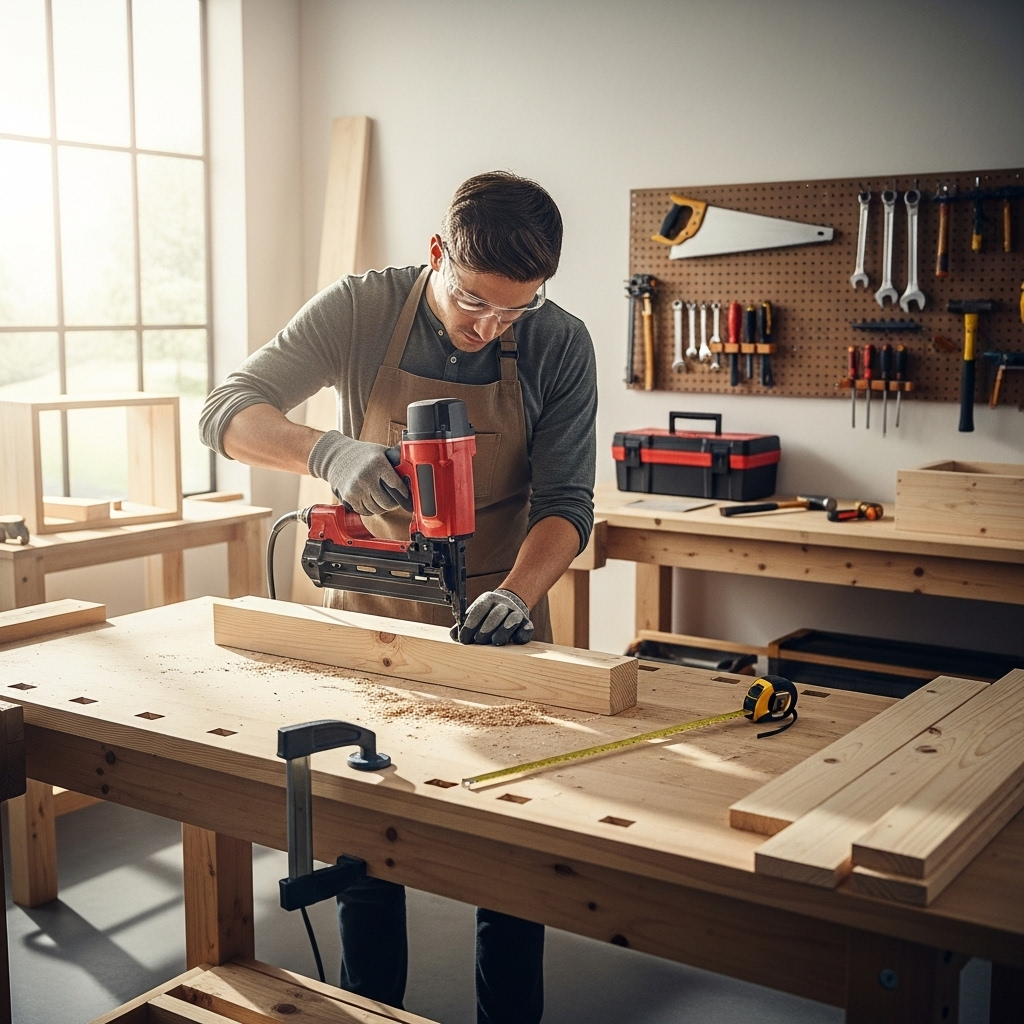
Nail guns aren’t one-size-fits-all. They’re designed for specific jobs. Understanding the different types is the first step to picking the best one for your needs.
1. Framing Nailers
These are the big guns, literally. They’re built for heavy-duty work like framing walls, floors, and roofs. They drive larger nails, typically from 2 inches up to 3.5 inches long.
Power Source: Usually pneumatic (air-powered), though some cordless models are available.
Nail COLLATION: These can be either coil nailers (which use nails held together by wire or plastic in a coil) or stick nailers (which use nails arranged in a straight line). Coil nailers generally hold more nails, meaning fewer reloads.
Best For: Structural framing, subflooring, decking.
2. Finish Nailers
Finish nailers are more refined. They use smaller nails (around 1 to 2.5 inches) to attach trim, molding, and other decorative elements where appearance is key. The holes they leave are small and easy to conceal.
Power Source: Can be pneumatic, electric (corded or cordless), or even gas-powered. Cordless electric models are very popular for their portability on job sites.
Nail COLLATION: Typically use straight magazines for their nails.
The ‘Precise Touch’ Aspect: These nailers are designed to drive nails flush or slightly countersunk into wood without damaging the surface. No more hammer marks on delicate trim!
Best For: Installing baseboards, crown molding, window and door casings, and other decorative wood elements.
3. Brad Nailers
Similar to finish nailers but even more delicate, brad nailers use very thin, small nails (usually 5/8 inch to 1.5 inches). They’re perfect for attaching thin, delicate trim, or when you need a very discreet fastening.
Power Source: Pneumatic and cordless electric are common.
Nailstion: Use slim, straight magazines.
The ‘Barely There’ Fastening: The nails are so thin that the holes are almost invisible, making them ideal for small, detailed projects or light-duty trim.
Best For: Attaching small molding, decorative pieces, cabinet work, and delicate craft projects.
4. Pin Nailers (or Micro-Pinner Nailers)
These are the lightest and most delicate of the bunch. They shoot headless pins, about 0.5 to 1 inch long, that are virtually invisible. They’re not for structural holding but for temporarily securing pieces while glue dries or for very fine detail work.
Power Source: Almost exclusively powered by compressed air or batteries in cordless electric models.
Nailstion: Use very thin, straight magazines for their pins.
The ‘Invisible Stitch’: Ideal for holding delicate trim pieces in place before gluing.
Best For: Securing tiny trim pieces, intricate wood crafts, and holding pieces for gluing.
5. Roofing Nailers
Specialized for one job: attaching shingles to roofs. They drive large-headed nails designed to hold roofing materials securely.
Power Source: Almost always pneumatic.
Nailstion: Coil magazine is standard, allowing for rapid shingle installation.
The ‘Weatherproof Warrior’: Built for durability and speed in tough outdoor conditions.
Best For: Installing asphalt shingles, underlayment, and other roofing materials.
Other Specialized Nailers
You might also encounter:
Siding Nailers: Designed to drive nails into siding materials like vinyl or fiber cement.
Flooring Nailers: Used for installing hardwood floors, often with a mallet and specific air-driven mechanism.
Pallet Nailers: Built for strength and speed to assemble or repair wooden pallets.
Key Features to Consider for a Professional Nail Gun
When you’re looking for a professional-grade nail gun, there are a few features that make a big difference in usability and performance.
Power Source:
Pneumatic (Air-Powered): These are the traditional choice for professionals. They are powerful, reliable, and usually lighter than their cordless counterparts. They require an air compressor and a hose, which adds some setup time and limits portability on some sites, but offer consistent power.
Cordless Electric (Battery-Powered): These have come a long way! They offer incredible freedom from hoses and compressors, making them super convenient for remote jobs or when you need to move quickly. The trade-off can be battery life, weight, and sometimes a slightly less powerful “punch” than a pneumatic one, though high-end models are very capable.
Corded Electric: Less common for professional nail guns, but they offer unlimited power without worrying about batteries or compressors. They are tethered, which can be a limitation.
Gas-Powered: Combines a fuel cell and battery. Offers cordless freedom but can have fumes and a higher running cost.
Depth Adjustment: This is crucial. You need to be able to easily adjust how deep the nail is driven into the material. Too deep and you damage the wood; too shallow and the nail might stick out. Look for tool-free, dial-based adjustments for quick changes on the fly.
Nail Jam Clearance: Jams happen. A good professional nail gun will have an easy, tool-free system for clearing jammed nails. You don’t want to be fumbling with screwdrivers for long when you’re on a deadline.
Trigger Action:
Sequential Trigger: Fires one nail per trigger pull. Offers more control and safety, ideal for precise placement.
Contact Trigger (or “Bump” Trigger): Fires a nail when the nose is pressed against the material, and the trigger is held down. Allows for rapid firing but requires more caution. Many professional tools offer the option to switch between these modes.
Magazine Angle and Capacity:
Angle: For framing and some trim work, angled magazines can help you reach into tight corners or flush against surfaces.
Capacity: How many nails does the magazine hold? A higher capacity means fewer reloads, saving you time and keeping your workflow smooth.
Weight and Ergonomics: If you’re using the nail gun all day, comfort is king. A well-balanced tool with a comfortable grip will reduce fatigue and make your work more enjoyable.
Air Fittings (for Pneumatic): For pneumatic tools, check the type of air fitting. Many professional tools come with robust, quick-connect fittings.
Top Picks: Best Nail Guns for Professional Carpenters
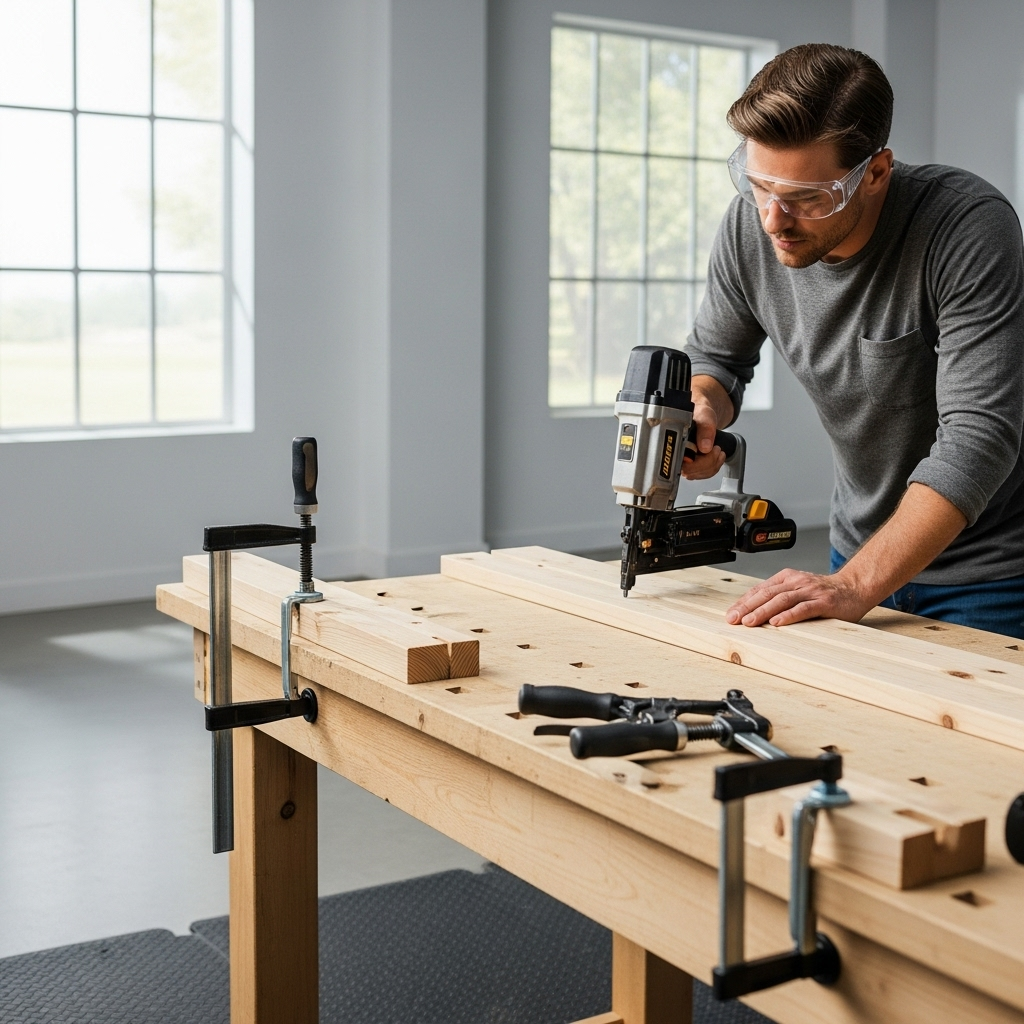
This isn’t an exhaustive list of every nailer made, but rather a look at highly-regarded tools that professionals trust. The “best” often comes down to your specific needs and budget, but these brands consistently deliver quality.
1. For Framing: The Powerhouse
When we talk about framing nailers, power, durability, and reliability are paramount.
Hitachi/Metabo HPT NR90AES1: This is a legendary framing nailer for a reason. It’s lightweight, ergonomic, and incredibly powerful. It fires nails straight and cleanly, and its “air-speed technology” makes it fast. It’s pneumatic, so you’ll need a compressor.
Pros: Very powerful, lightweight, excellent reliability, comfortable to use.
Cons: Requires an air compressor and hose.
Learn More: You can find detailed specs and user reviews on reputable tool sites like Tool Nut or construction equipment suppliers.
DEWALT DCN692M1 20V MAX XR Brushless Cordless Framing Nailer: For cordless convenience without sacrificing too much power, DEWALT is a strong contender. This brushless model offers impressive driving power and good battery life.
Pros: Cordless freedom, powerful enough for most framing, good battery platform.
Cons: Can be heavier than pneumatic options, battery needs charging.
2. For Finish Work: Precision and Cleanliness
Finish nailers are where brands like SENCO, Paslode, and DEWALT shine.
SENCO SFN65DA: Often cited as a top-tier finish nailer, the SFN65DA is known for its precision and lack of marring. It can handle both 15-gauge and 16-gauge nails (with different magazine inserts) and has excellent depth control.
Pros: Supreme precision, minimal wood damage, versatile for different nail sizes.
Cons: Pneumatic; requires compressor.
Paslode Cordless XP 16 Gauge Straight Finish Nailer (918C): Paslode is famous for its cordless framing nailers, but their cordless finish nailers are excellent too. This model uses a fuel cell and battery for cordless power, offering great freedom and performance.
Pros: Excellent cordless performance, consistent drives, good for various wood types.
Cons: Fuel cells are a recurring cost, can be a bit heavier.
DEWALT DWFP72154 16-Gauge Straight Brad Nailer (with Smart-Lock): If you need a reliable electric option without an air compressor, DEWALT’s cordless 16-gauge straight nailer is a solid choice. The Smart-Lock system helps prevent accidental firing and marring.
Pros: Tool-free depth adjustment, lightweight, good for trim work.
Cons: Battery dependent.
3. For Brad and Pin Nailing: Delicate Detail
Bostitch BTFP12150 16-Gauge Straight Brad Nailer: Bostitch is known for durable, no-nonsense tools. This 16-gauge brad nailer is powerful, reliable, and has the depth adjustment crucial for trim work.
Pros: Affordable, durable, reliable performance.
Cons: Can be a bit louder than some alternatives.
Grex P650A 23 Gauge Headless Pinner: For the most delicate work where even a brad mark is too much, the Grex P650A is a top choice. It drives headless pins, making the fasteners virtually disappear.
Pros: Drives virtually invisible fasteners, great for fine detail and temporary holding.
Cons: Pins offer very little structural holding power.
Nail Gun Safety: Non-Negotiable for Professionals
Using a nail gun is faster, but it’1s also more dangerous than a hammer if you’re not careful. Safety should always be your top priority.
Essential Safety Gear:
Safety Glasses: Absolutely mandatory. Always wear impact-resistant safety glasses or goggles. Nails can ricochet, or pieces of wood can fly off.
Hearing Protection: Nail guns are loud! Use earplugs or earmuffs, especially during extended use or in confined spaces.
Gloves: While not directly preventing nail injuries, good work gloves improve grip and protect your hands from splinters and abrasions.
Sturdy Footwear: Protect your feet from dropped tools or materials.
Safe Operating Practices:
Read the Manual: Every tool is different. Familiarize yourself with your specific nail gun’s operation, safety features, and maintenance requirements.
Never Point at Yourself or Others: Treat the nail gun like a loaded firearm. Keep the muzzle pointed away from people, animals, or yourself at all times.
Disable When Not in Use: Remove the battery, disconnect the air hose, or remove the magazine when the tool is not actively in use, or when changing nails.
Use the Correct Nails: Always use the manufacturer-recommended size and type of nails for your nail gun. The wrong nails can cause jams or damage the tool.
“Bump” Firing Awareness: If your nailer has a contact or “bump” trigger, be extremely cautious. Do not “dry fire” it (pulling the trigger without the nose touching wood) unnecessarily. Be aware of where the tip is pointing at all times. For critical placement, sequential firing is always safer. The ability to switch between modes is ideal for professionals.
Stable Work Surface: Ensure your workpiece is stable. Kickback can occur if the nail hits a knot or unexpected material, causing the tool to jump.
Hose Management (Pneumatic): Keep air hoses organized and out of walking paths to prevent tripping hazards. Ensure your air compressor is set to the correct PSI for your tool. Most nail guns operate between 70-120 PSI.
Battery Care (Cordless): Store batteries properly and use only the charger recommended by the manufacturer.
For more detailed safety guidelines, the Occupational Safety and Health Administration (OSHA) offers resources on powered nail gun safety. You can find their guidelines by searching for “OSHA powered nail gun safety” on their official OSHA.gov website.
Maintaining Your Nail Gun for Longevity
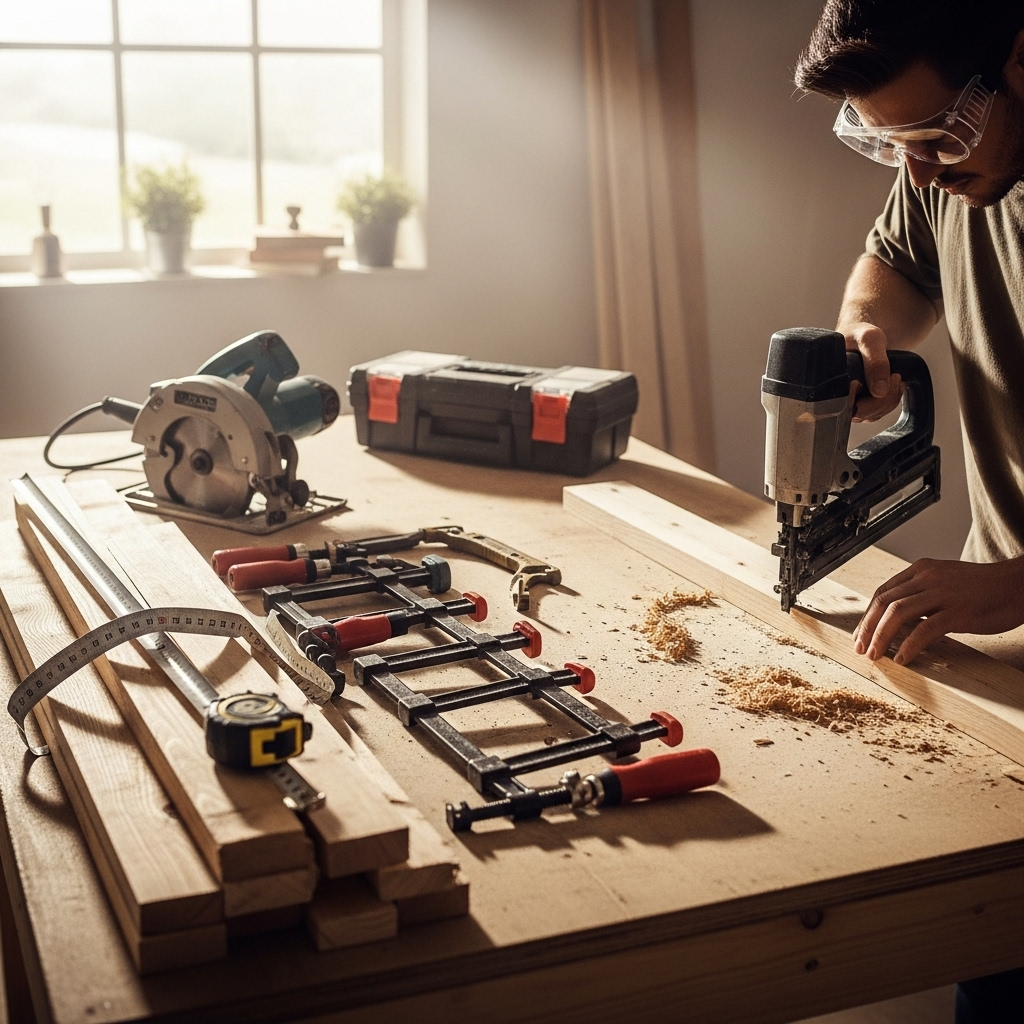
A well-maintained nail gun is a reliable nail gun. A little regular care goes a long way to ensure your tool performs at its best for years.
Regular Maintenance Checklist:
Clean the Exterior: Wipe down your nail gun after each use to remove sawdust and debris.
Lubrication:
Pneumatic: Most pneumatic nailers require a few drops of specialized pneumatic tool oil in the air inlet before each day’s use. Check your manual!
Cordless: Generally, cordless models do not require oiling.
Check the Magazine: Ensure the magazine slides smoothly and that any feed mechanisms are clean.
Inspect the Nosepiece: Make sure the driving teeth are clean and that the contact trip (the part that engages the wood to fire) moves freely.
Clear Jams Promptly: Don’t let jammed nails sit. Clear them as soon as they occur to prevent damage to the tool.
Store Properly: Store your nail gun in a dry, protected case or toolbox. For pneumatic tools, disconnect the air hose and store it neatly. For cordless tools, remove the battery for long-term storage.
Annual Service:** For professional use, consider having your nail gun professionally serviced annually or as recommended by the manufacturer. This ensures internal parts are checked and worn components are replaced.
Here’s a quick look at basic maintenance tasks:
| Task | Frequency | Notes |
|---|---|---|
| Exterior Cleaning | After each use | Wipe with a dry cloth. Use a damp cloth for stubborn dirt. |
| Lubrication (Pneumatic) | Daily (before use) | 2-3 drops of specialized air tool oil in the air inlet. |
| Check Magazine | Weekly | Ensure smooth operation, clear debris. |
| Inspect Nosepiece/Trip | Weekly | Ensure clean and free movement. |
| Clear Jams | As needed | Follow manufacturer’s instructions for tool-free clearing. |
| Deep Cleaning/Service | Annually (or as recommended) | Consider professional service. |
FAQs: Your Quick Nail Gun Questions Answered
Q1: What’s the difference between a framing nailer and a finish nailer?
A1: Framing nailers are for heavy-duty structural work, driving large nails quickly. Finish nailers are for trim and molding, using smaller nails with less impact to create a clean look.
Q2: Do I really need an air compressor for a nail
